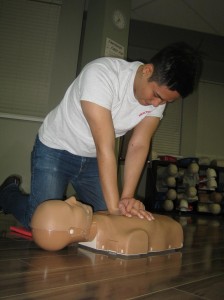When responding to a medical emergency, interviews with the patient and other individuals at the scene of emergency can provide you with vital information. Unlike other first aid situations where the injuries and its likely causes are obvious, medical emergencies can occur with no definitive clue as to the cause of the problem. The person may just suddenly feel dizzy or faint or collapse. In this case, the patient, significant others, fellow workers, or neighbors may be able to give you information about known medical conditions. When you are knowledgeable with Emergency first aid courses then you will surely know what to do.
In some cases, you can refer to the medical identification device of the patient. These devices can give you valuable lead as to what may have happened or what could be wrong with the patient. However, in cases where 
In order to determine the nature of the medical emergency, it is important that you gather and evaluate relevant medical history and the signs and symptoms. However, you should understand when providing first aid, your immediate goal is to provide essential emergency care and not to diagnose the condition. Do not spend too much of your time trying to diagnose the patient. Focus on the immediate needs of the patient. Make sure that the patient’s airway is open, breathes effectively and has normal heart rate. Prioritize on the needs of the patient and activate emergency medical services.
After the patient’s condition has stabilized and while waiting for the ambulance, you can continue with your patient survey. Gather more information about the possible condition of the patient. Collect important signs and symptoms. If anything about the patient’s general health is unusual, consider there is medical emergency. All signs and symptoms, and complaints of the patient should be assumed as valid and related to his condition. Some patients may report vague symptoms such as not feeling well or having an unusual day. These are very broad symptoms that can actually be caused by an underlying condition. Do not undermine any reported symptom of the patient.
Medical emergencies are wide and varied. In some cases, you can actually do nothing but provide reassurance, monitor the patient, and administer initial care for a certain set of signs and symptoms. Basic first aid training courses are limited only to essential life-saving skills such as CPR courses, care for burns, fractures, wounds, choking and so on. Do not feel frustrated if you feel that you can do nothing to help the patient. Medical emergencies are completely different from common first aid situations.
Always think that no matter how minimal your assistance is, the sense of security and assurance you give can greatly help the patient cope up with the situation.
